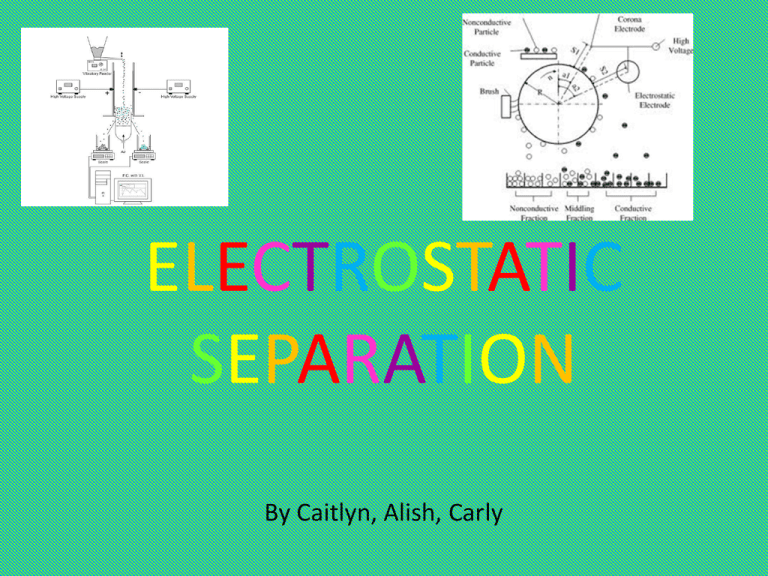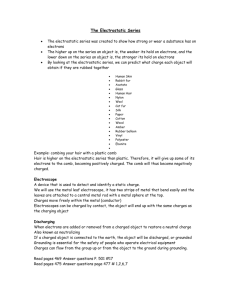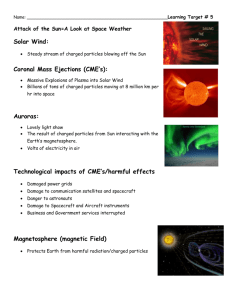Science Project: Alish, Carly & Caitlyn
advertisement

ELECTROSTATIC SEPARATION By Caitlyn, Alish, Carly DefinitionElectromagnetic forces can be used to separate non-magnetic materials from other non-magnetic materials as well. This is called electrostatic separation. ExampleElectrostatic air cleaner is a particulate collection device that removes particles from a flowing gas (such as air) using the force of an induced electrostatic charges. ExampleA simple form of electrostatic separation can be performed using a plastic comb and some peanuts with the skins still on. Rub the peanuts so that the skins are easily separated from the peanuts. Then rub the comb against something fuzzy (a woolly jumper would work well) and pass it over the peanuts. The peanut skins should separate from the peanuts this way. When you rub the comb against your jumper, it charges the comb. This is often referred to as static electricity. Different materials are affected differently by these electrical charges. ExampleElectrostatic separation is often used to separate waste products from the air in chimneys attached to factories and power plants. The smoke that passes through the chimney passes through a series of electrically charged wires, which charge the smoke particles. Then, near the top of the chimney, charged plates attract the charged particles. This cleans some of the dangerous waste products from the smoke and prevents them from escaping into the environment. The Process This process uses dry ore particles that are broken into smaller sizes, and 250 mesh size particles are chosen and separated from impurities. This dry ore is electrostatically charged by passing a high velocity arc through the ore. This creates two oppositely charged particles. An oppositely charged collector is used to remove the impurities. This process gives the pure form of the metal and is very widely used for extracting precious metals





